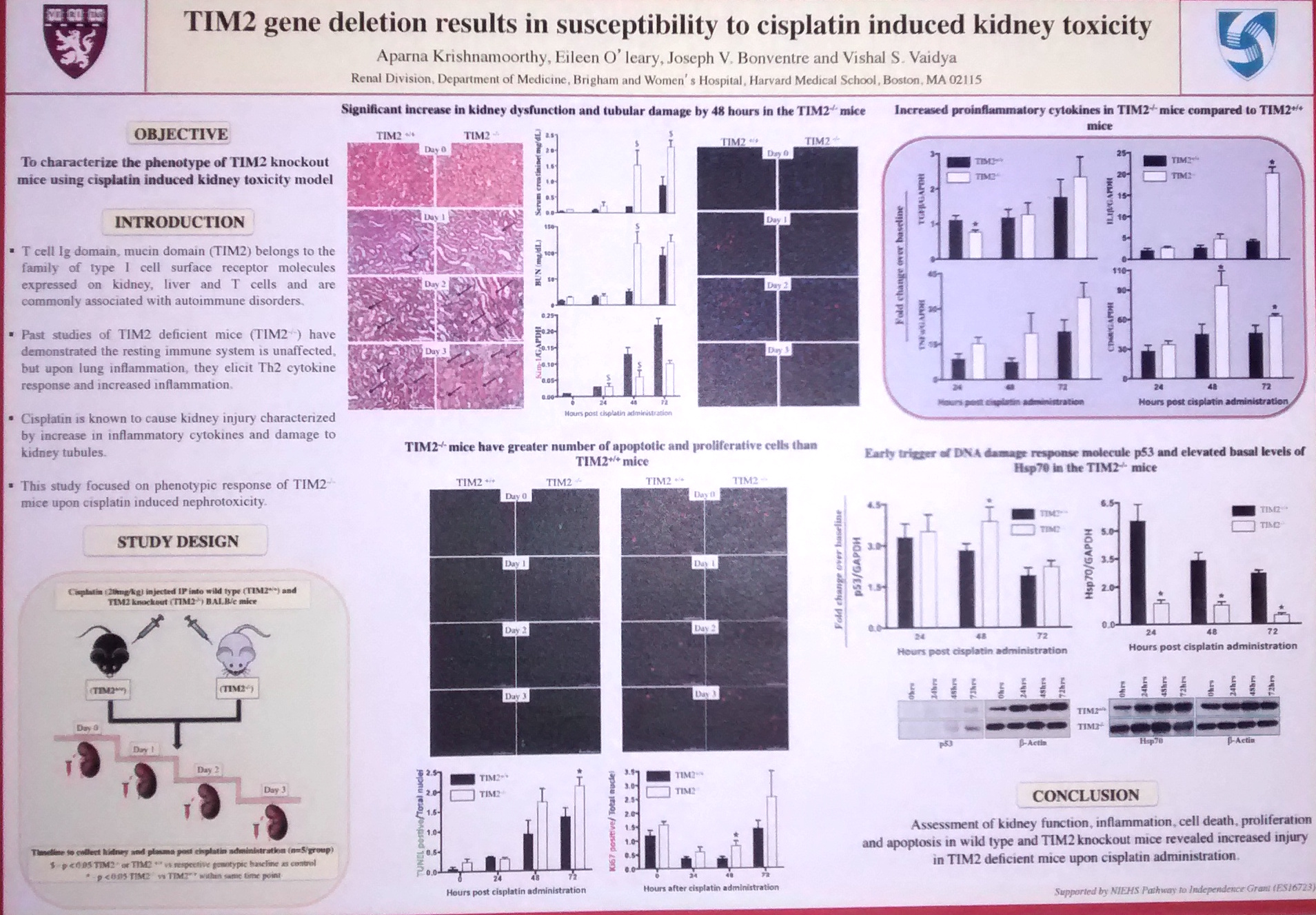The TIMs do a fine job protecting against kidney injury

Recurrent episodes of acute kidney injury are a major concern in the medical field, and follow-up programs aim prevention and early detection of acute kidney injury, including early assessment and advice regarding the avoidance of nephrotoxin exposure. Addressing this extremely pressing issue in human health and disease management, I published novel findings in the journal of Toxicological Sciences, suggesting that family members belonging to the T-cell Immunoglobulin domain and Mucin domain (TIM) may play a critical role in preventing inflammation and apoptosis following kidney damage caused by exposure to nephrotoxicants, such as cisplatin. The TIM family members are frequently linked with asthma, allergy and other immune responses, and have been studied for their role in the regulation of immune functions. The impact of my findings emphasize the role mediated by inflammatory cytokines driven damages in kidney disease.
Related publication:
TIM2 Gene Deletion Results in Susceptibility to Cisplatin-Induced Kidney Toxicity
Abstract
T-cell Immunoglobulin and Mucin domain 2 (TIM2) belongs to the receptor family of cell surface molecules expressed on kidney, liver, and T cells. Previous studies have revealed that TIM2-deficient mice (TIM2(-/-)) are more susceptible to the Th2-mediated immune response in an airway inflammation model. Here, we investigated the phenotypic response of TIM2(-/-) mice to cisplatin-induced kidney toxicity. A lethality study in male BALB/c wild-type (TIM2(+/+)) and TIM2(-/-) mice, administered with 20 mg/kg cisplatin ip, resulted in 80% mortality of TIM2(-/-) mice as compared with 30% mortality in the TIM2(+/+) group by day 5. The TIM2(-/-) mice showed approximately fivefold higher injury as estimated by blood urea nitrogen and serum creatinine at 48 h that was confirmed by significantly increased proximal tubular damage assessed histologically (H & E staining). A significantly higher expression of Th2-associated cytokines, TNF-α, IL-1β, IL-6, and TGFβ, with a significant reduction of Th1-associated cytokines, RANTES and MCP-1, by 72 h was observed in the TIM2(-/-) mice as compared with TIM2(+/+) mice. A higher baseline protein expression of caspase-3 (approximately twofold) coupled with an early onset of p53 protein activation by 48 h resulted in an increased apoptosis by 48-72 h in TIM2(-/-) compared with TIM2(+/+). In conclusion, the increased expression of the proinflammatory and proapoptotic genes, with a higher number of apoptotic cells, and a pronounced increase in injury and mortality of the TIM2-deficient mice collectively suggest a protective role of TIM2 in cisplatin-induced nephrotoxicity.